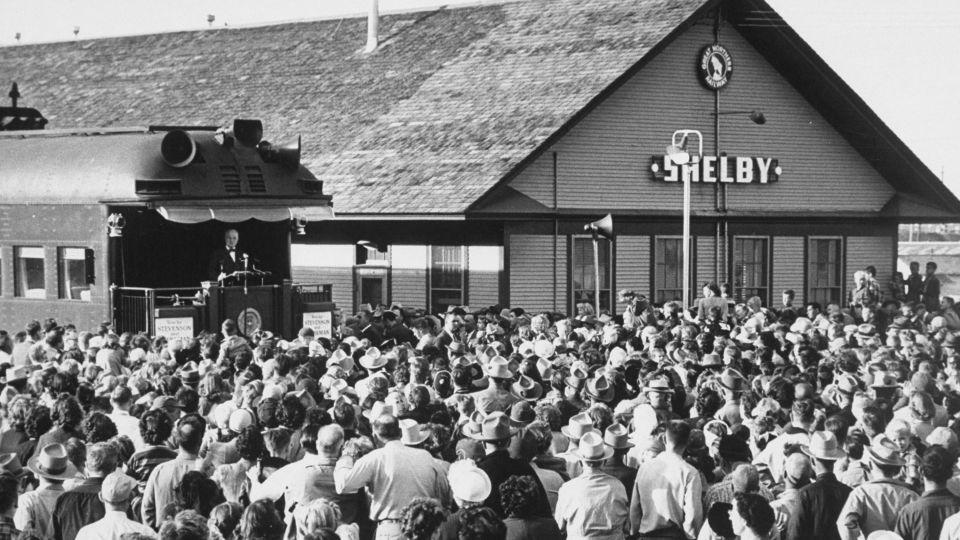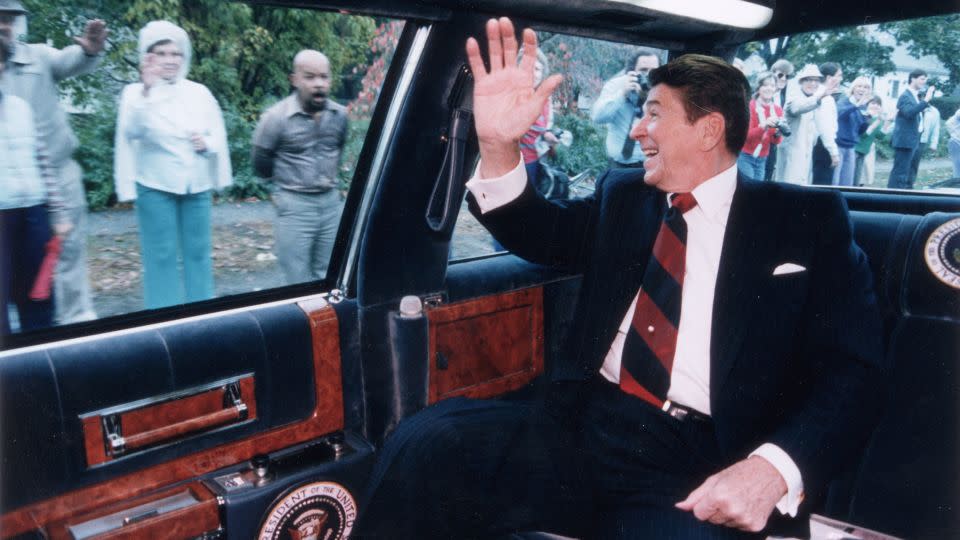Why did early presidents not campaign? It’s all modern presidents seem to do
A version of this story appeared in CNN’s What Matters newsletter. To get it in your inbox, sign up for free here.
When he talks to reporters outside the New York courtroom where he is on trial for falsifying business records, former President Donald Trump usually complains he’d rather be with voters.
“They want to keep me off the campaign trail,” he said on Tuesday, suggesting the trial is part of an election interference conspiracy, for which there is no evidence.
It was a similar story last week, when Trump said he should be campaigning in battleground states.
“We’re at a courthouse instead of being in any one of I would say 10 states where I’d like to be right now,” he said to TV cameras that beamed his remarks around the country.
Meanwhile, President Joe Biden has been folding trips to Pennsylvania, Michigan, Wisconsin and Florida into his schedule. Trump chose not to campaign when court was out of session Wednesday, but he will appear in New Jersey this weekend.
Both major candidates obviously perceive value in the act of campaigning — being on the trail and speaking directly to voters.
It’s hard to believe that early American presidents did no personal campaigning whatsoever. They thought it was beneath them and the office they held.
I talked to Brendan Doherty, a professor of political science at the United States Naval Academy and author of the books, “The Rise of the President’s Permanent Campaign” and “Fundraiser in Chief: Presidents and the Politics of Campaign Cash,” about why early presidents stayed off the trail and how this became the permanent campaign.
Our conversation, conducted by email, is below:
WOLF: Why didn’t early presidents personally campaign?
DOHERTY: In the early decades of the republic, presidential candidates adhered to the norm that they should not actively campaign for office. It was seen as unseemly to seek the office to which they hoped to be elected. But that didn’t stop them from finding other ways of communicating with voters.
WOLF: How did these early non-campaigning presidents get their message out?
DOHERTY: While early presidential candidates didn’t actively campaign, their supporters got the word out on their behalf.
Newspapers were openly partisan in the early republic, and many of their articles openly praised or criticized various candidates. While candidates did not attend political conventions in the 1800s, supporters made the case for their preferred candidates in ways that drove news coverage.
In the late 1800s, some presidential candidates mounted what were called “front porch campaigns.” They would speak to supporters at or near their homes, and newspapers would cover these speeches and spread their messages across the country.
WOLF: What are some key moments in the rise of the current model of campaigning?
DOHERTY: In 1866, President Andrew Johnson broke from precedent and actively campaigned in the midterm elections. His travel to give a series of speeches was called the Swing around the Circle, and he was criticized both for actively campaigning and for using inflammatory rhetoric while doing so.
Two years later, the House of Representatives impeached Johnson for, among other things, giving these campaign speeches that brought Congress into “disgrace, ridicule, hatred, contempt, and reproach.”
In 1896, Democratic nominee William Jennings Bryan actively campaigned across the country, while the eventual winner, Republican William McKinley, conducted a front porch campaign.
In 1932, Franklin Roosevelt became the first presidential candidate to appear at a convention to accept his nomination in person.
And in 1948, Harry Truman actively campaigned across the country, giving speeches from the back of a train in what became known as his whistle-stop campaign.

WOLF: Who was, in your view, the best natural campaigner who ran for president? What did they do differently?
DOHERTY: While it’s hard to pick out a single best campaigner, two who come to mind are John F. Kennedy and Ronald Reagan.
Kennedy actively campaigned in the primary elections in 1960 at a time when leading candidates often skipped active campaigning during the nomination contest. But he wanted to demonstrate his electability to party leaders who might be skeptical that a Catholic could win the White House after the only other Catholic major party nominee had lost in a landslide to Herbert Hoover in 1928.
Kennedy was widely seen as charming and eloquent on the stump, and his wins in the Wisconsin and West Virginia primaries helped him win his party’s nomination and then the White House.
Reagan channeled his years of performance as an actor and his sense of humor to campaign effectively for the presidency. His voice, his timing, and his telling of stories and jokes to connect with his audiences won him much praise.
When questioners implied that being an actor wasn’t adequate preparation to be president, Reagan would respond that he didn’t know how someone could be an effective president who hadn’t been an actor.

WOLF: Is active campaigning — holding rallies and flying from stop to stop — effective in a country of more than 335 million people? A candidate can only shake so many hands. Plus, most people already lean toward one party or the other. What does putting a candidate on the trail accomplish?
DOHERTY: While presidential candidates can only meet a relatively small sliver of the American population — and, more importantly, of the population of the small number of Electoral College battleground states that will decide a presidential election — their campaigning can drive news coverage, which has a multiplier effect when it comes to getting their message out.
Political science studies have shown that local news coverage is often more favorable to presidents and presidential candidates than national news coverage is, so candidates campaign in part so that local media outlets will amplify their campaign messages.
While it’s increasingly difficult for candidates to grab and hold the public’s attention given our increasingly fragmented media landscape, that certainly doesn’t stop presidential hopefuls from trying.
WOLF: I suppose the inverse of candidates who don’t campaign is our current system, in which they only briefly stop campaigning to govern. Why is the permanent campaign a problem, and how could it be fixed?
DOHERTY: Modern presidents campaign for themselves and for their fellow party members throughout their term in office. They raise campaign funds and they travel to key electoral states.
While presidents used to try not to appear to be overly focused on campaigning too early in their term in office, that’s no longer the case.
In the summer of his third year in office, Ronald Reagan refused to tell an interviewer whether or not he would run for another term because he said that he didn’t want everything he did as president to be seen through a political lens.
In contrast, Donald Trump filed paperwork establishing his reelection campaign committee on the day in 2017 when he was inaugurated as president, and he held his first reelection fundraiser less than six months later, in June of his first year in office.
When presidents begin their explicit campaigning earlier and earlier in their term in office, they are responding to the incentives of our electoral system. But time is the president’s scarcest resource, and time spent campaigning is time not spent doing the important job to which he, and someday she, was elected.
For better or worse, there are no readily apparent realistic fixes that could stop a reelection-focused president from campaigning for reelection throughout his term in office.
WOLF: If transportation and technology have helped candidates directly reach more and more people, where do you see campaign methods heading next?
DOHERTY: Technological advances have helped candidates connect with the American people, from the radio to television, the internet, and now social media.
These developments, along with advances in campaigns’ ability to micro-target voters in key states with messages designed to appeal to issues they care about, have led campaigns to shift away from broadcasting appeals in favor of narrow, targeted outreach to potentially persuadable voters.
In an era in which so much of what voters do online is tracked and can be used to build profiles of voters’ interests and preferences, I expect that this micro-targeting will become ever more precise, allowing campaigns to tailor increasingly specific messages to the voters they are trying to reach.
For more CNN news and newsletters create an account at CNN.com


